|
New Division Chief Announced
Survey Season in Review
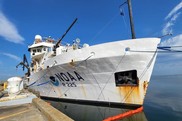
This year, our center’s scientific parties, the officers and crew of NOAA ships, and charter vessels logged more than 300 days at sea monitoring and sampling from ships on the U.S. Northeast shelf. These surveys collect data that underpin research across our scientific mission, and many continue decades-long data collection efforts. They're the main reason the Northeast shelf ecosystem is one of the best understood marine ecosystems in the world. Here’s how the 2022 survey season went.
|
New Paper Sea-Life Snowflake Crafts
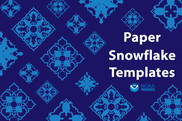
’Tis the season for holiday craft fun! Enjoy an all new set of paper snowflake templates just in time for the holidays! This year’s snowflakes celebrate a few of our Woods Hole Science Aquarium residents: Atlantic cod, chain dogfish, common spider crab, diamondback terrapin. Two of our designs have 3D elements to really make them pop! "Our snowflakes add festive cheer to walls, windows, ceiling, holiday trees, and even holiday cakes. If you make a snowflake, we’d love to see it! Take a photo and share it on Facebook or Twitter using the hashtag #WHSASnowflakes.
|
Aquaculture On-Demand Gear Research
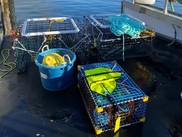
While marine aquaculture can increase domestic seafood production, some gears use lines that could risk entangling protected marine mammals and sea turtles. This limits where aquaculture can take place. Although aquaculture does not have a history of entangling protected species in the United States, we’re committed to engineering aquaculture gear that is safer for these animals. We’re learning from challenges and innovation in the fixed gear commercial fishing industry, such as “ropeless” or on-demand lobster gear currently in development. We’re conducting field experiments with on-demand aquaculture gear to collect operational and biological data with partners at the University of New Hampshire and in the aquaculture industry
|

What Grows on Kelp?
Scientists at our Milford Lab published the first comprehensive list of microorganisms growing on aquacultured sugar kelp throughout a growing season. GreenWave, an ocean farming non-profit based in New Haven, Connecticut, worked with our scientists to provide kelp and seawater samples for the study. During the study, the team didn’t find any microorganisms that would pose a concern for food safety. They also found little presence of species that could impact product quality. That’s great news for industry since some microorganisms could compromise safety and quality and potentially increase costs related to product processing for the market.
|
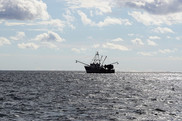
Study Fleet Program Seeks New Industry Partners
Our Cooperative Research Branch’s Study Fleet Program is recruiting new vessels to participate in the squid, mackerel, butterfish, scup, black sea bass, summer flounder, whiting, haddock, and tilefish fisheries. These fisheries have been identified as priorities for collecting long-term, tow-by-tow data using our Fisheries Logbook Data Recording Software, automated oceanographic sensors, and real-time data transmission. Vessel owners should be on the lookout for an announcement in March 2023, when we will be accepting quotes through our public solicitation for new vessels to join the program. Contact katie.burchard@noaa.gov with questions.
|
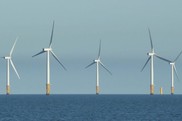
Federal Survey Mitigation Strategy for Offhore Wind Energy Development Announced
NOAA Fisheries and the Bureau of Ocean Energy Management have announced a joint strategy to address potential impacts of offshore wind energy development on our scientific surveys. The Federal Survey Mitigation Strategy underscores the agencies’ shared commitment to the Biden-Harris Administration’s clean energy goals of responsibly advancing offshore wind energy production while protecting biodiversity and promoting ocean co-use.
|
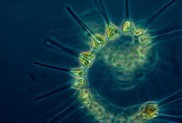
Fall Ecosystem Monitoring Survey Summary
Our fall Ecosystem Monitoring (EcoMon) survey completed 52% of planned stations despite staff shortages and poor weather. This survey helps us understand and predict changes in the Northeast shelf ecosystem and its fisheries. We use EcoMon data to monitor the distribution and abundance of zooplankton and larval fish, water temperature and salinity, and ocean acidification. Researchers also collect observations of seabirds, marine mammals, and sea turtles.
|

Fall Bottom Trawl Survey Summary
Despite a series of challenges, our fall bottom trawl survey completed trawl, plankton, and temperature and salinity sampling at 82% of the planned stations. This long-running survey monitors fishery stock abundance and distribution on the Northwest Atlantic continental shelf from the Scotian Shelf off the coast of Nova Scotia, Canada, to Cape Lookout, North Carolina. Data collected include fish age, length, weight, sex, maturity and food habits information. These are critical inputs to regional fish stock assessments helping to inform fishery management decisions by the New England and Mid-Atlantic Fishery Management Councils as well as Atlantic States Marine Fisheries Commission.
|
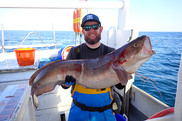
Wow-Worthy Survey Moments
What were the most wow-worthy moments during the fall Gulf of Maine Cooperative Bottom Longline Survey? To find out, marine resource specialist Giovanni Gianesin asked fellow survey participants what wowed them the most. From eerie fog and a regurgitated octopus, to huge fish and a feeding frenzy, their answers do not disappoint!
|
From the Director

We’ve had a number of opportunities and challenges in 2022. I’m an optimist, so I’ll focus on the opportunities. We’ve increased our engagement with the fishing industry and developed additional uses for fishery-dependent data. These efforts further illuminate the opportunity of working together. The new Northeast Regional Coordinating Council process is improving our assessment science. This process is also leading us to have greater engagement with industry and academic partners. We’ve been developing new survey technologies—acoustics, uncrewed platforms, environmental DNA, satellite detection—that will revolutionize how we observe and monitor our fisheries, protected species, and ecosystem as a whole. We’ve developed new partnerships that help move joint goals forward and continue our important work. I’m also a pragmatist and recognize that there are challenges—some long-standing and some new. That said, I’m looking forward to 2023 and meeting some of those challenges head-on. We’ll continue to focus on our opportunities and while addressing our challenges. From myself and the science center, we wish you and yours a very happy, healthy, and safe holiday season!
|
|
|
Upcoming Events
Dec 23 Deadline: New England Fishery Management Council Scientific & Statistical Committee applications
Dec 31 Deadline: Update Recreational Fisheries Policy public comment
Jan 9-11 Meeting: 2023 Milford Aquaculture Seminar
Jan 13 Meeting: Atlantic Cod Working Group
Jan 13 Meeting: Applying State Space Models Working Group (Project #3 subgroup)
Jan 18 Webinar: Educational Partnership Program with Minority Serving Institutions & Hollings Scholars
Jan 20 Meeting: Atlantic Scallop Working Group
Jan 31 Deadline: Educational Partnership Program with Minority Serving Institutions internship applications
Jan 31 Deadline: Hollings Scholars internship applications
Jan 31 Meeting: Mid-Atlantic Cooperative Research Summit
Feb 10 Deadline: Inclusive NOAA Fisheries Internship Program (IN FISH) applications
Feb 10 Deadline: Woods Hole Partnership Education Program (PEP) applications
Feb 10 Deadline: Growing School District Capacity and Supporting Regional Capacity Building grant applications
Feb 15 Meeting: New England Cooperative Research Summit (waitlist only)
|
|
|
|
|